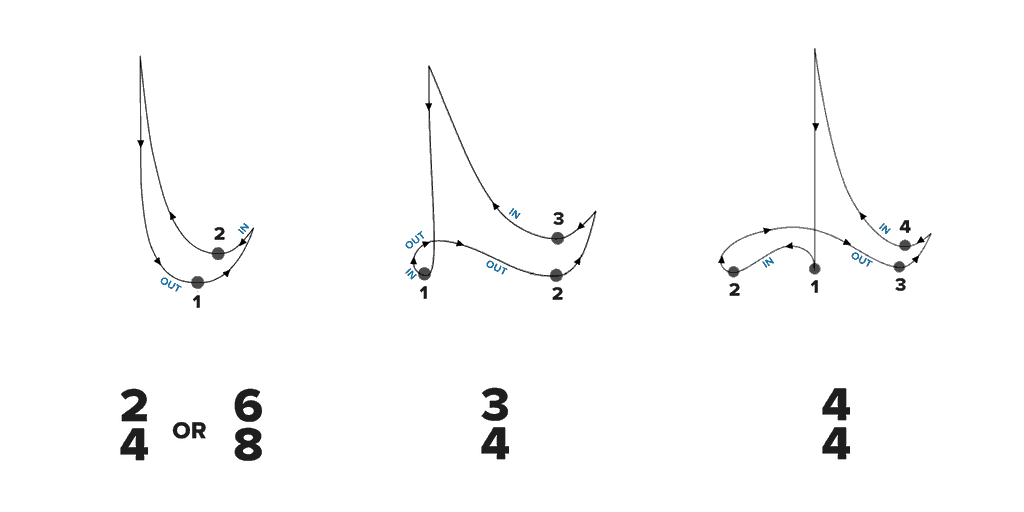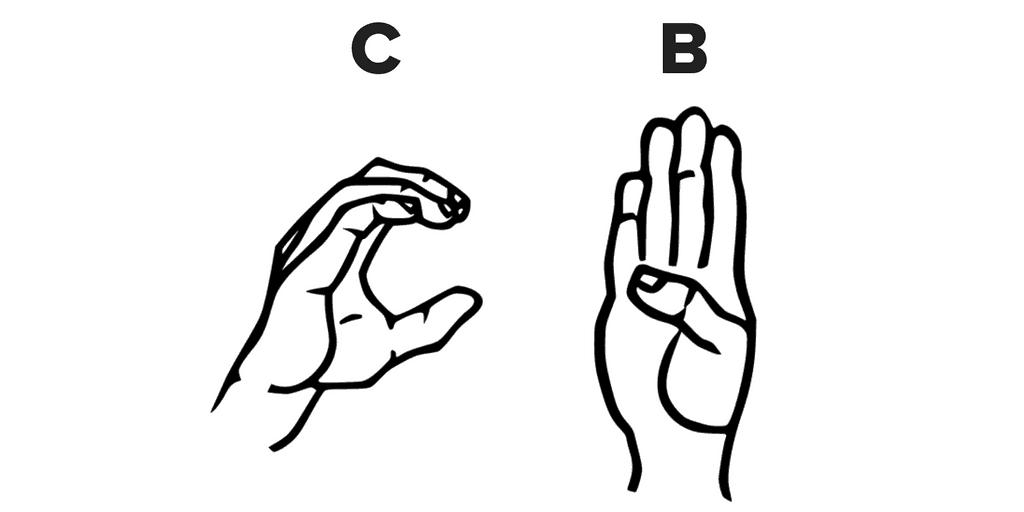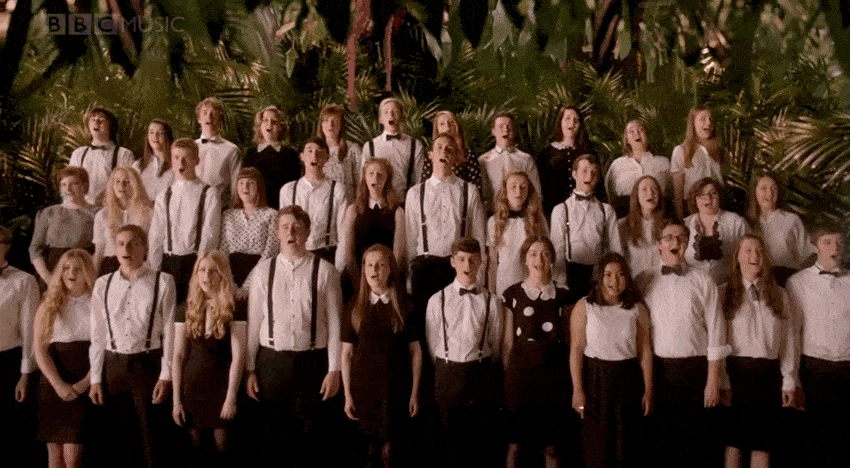How to Conduct a Choir: Lead Like a Pro
Learn how to conduct a choir like a pro by checking out Musicnotes’ detailed how-to guide. Understand the basics of cues, cutoffs, assembling, and more!

Conducting a choir can seem like an overwhelming responsibility. When all eyes are on you, relying on your cues, reminders, and energy, you can’t afford to be unprepared. But don’t worry, we’re here to help you understand the basics of conducting, and how you can confidently lead your choir through a great performance!
Conducting Patterns
One of the most important jobs a conductor has is to the choir on tempo. In order to do this, most conductors use conducting patterns.
A conducting pattern is a pattern in which your dominant hand follows in order to establish beats and tempo to the choir.
Conductors that are directing large orchestras and choirs will oftentimes use a baton so that the entire group can clearly see the motions. For smaller groups and more informal settings, it is sufficient to just use your hand.

BOTH hands can be used to conduct the beat when the non-dominant hand is not being used for cues.
These conducting patterns change based on the time signature, but the most common patterns used are for songs with 4, 3, or 2 beats per measure. In the following illustration:
- The numbers represent the beats in each measure.
- The arrows represent the direction of movement between beats.
- The word out represents a movement away from your body.
- The word in represents a movement towards the center of your body.

These basic conducting patterns are widely used and we suggest taking the time to familiarize yourself with them. Depending on how proficient you would like to be, you can go anywhere from watching YouTube tutorials, to taking classes, to getting a degree in conducting! All in all, the end goal is for these patterns to become like second nature to you so that your non-dominant hand is free for other cues.
The reason 6/8 is listed with 2/4 is because 6/8 is typically felt in 2 (1 2 3 4 5 6) rather than in 6 (1 2 3 4 5 6).
Cuing Entrances and Cut-Offs
Once you’ve mastered keeping rhythm, you will need to start thinking about conducting cues. Cues are important because, as we mentioned before, your choir is depending on you to lead them through a well-executed performance. Even when songs are memorized beforehand, cues will ensure that your entire choir is on the same page. The two most important cues you will need to learn, both for the choir as a whole as well as the individual voice sections, are:
- Entrances
- Cut-Offs
In order to deliver these cues, you must know the music. This sounds like a no-brainer, but it’s actually much harder than you’d think to direct your choir while looking down to check your own music. You simply won’t have time to always be doing both.
As a conductor, it’s important to always be thinking ahead.
For example, if your alto section has a syncopated entrance at measure 52, you need to have your head up and eyes locked on the alto section at measure 50. Your hand will go up at measure 51, and your cue will come just a moment before the altos make their (hopefully) flawless entrance! All the while you are keeping the tempo and thinking ahead to the next cue you need to give. This is why it’s so important that you know the music better than anyone else. You should be able to cue your choir’s entrances and cut-offs in your sleep!

Cueing Song Sections, Harmony Parts, and Lyrics
When it comes to cueing song sections (such as a chorus or a bridge), harmony parts, and lyrics, you will want to come up with a variety of hand signals that your choir will recognize so that they don’t have to try and read your lips as you whisper-shout different commands. We’ll give you a few ideas:
- Typical church choirs usually stick to 3 harmony parts. If you’re leading a church choir, to cue these parts you might hold up the numbers 1, 2, or 3, to indicate them singing in unison (1), two parts, or three parts.
- If there is a lyrical section your choir struggles with, decide beforehand on a signal that will correlate. Otherwise, you can simply point to your mouth to get your choirs attention and then mouth the upcoming lyrics.
- Use sign language to indicate choruses (C) and bridges (B). This is especially helpful for when these sections are repeated multiple times.

Arranging Your Choir
When it comes to arranging your choir, the possibilities are endless. First and foremost, we recommend that for every type of formation, the singers should be assembled in a slight arch. If that isn’t possible, the singers on each end should angle their bodies in towards the center. This allows for your choir to really hear each other and blend well. When it comes to placing each section within the arch, the most common formations are:

You can use these formations as a starting point for your choir, but feel free to branch out and create a formation of your own! For example, if you have a smaller choir, you could play around with intertwining different voice parts throughout the entire formation. But for any formation you design, you should keep these two things in mind:
- Every member of your choir should be visible.
- You should hear an equal distribution of voices from your choir.

Energize Your Choir
Perhaps one of the most important jobs of a choir conductor is to set the energy of the choir!
If the conductor looks tired or like they don’t want to be there, the choir will likely mirror that attitude.
You can boost the energy of your choir by:
- Giving a pre-performance pep talk
- Doing fun vocal warm-ups
- Lead some stretches or partner shoulder rubs
- Giving affirming smiles and gestures during the performances
- Making funny faces at your choir (yes, it works!)
- Praising your choir for what they did well
A high energy level from your choir will result in a focused performance as well as motivation to do a good job! It will also ensure that your choir will be focused on you as you guide them through each song and transition.

We hope these tips and tricks on how to conduct a choir were helpful for you and that you feel more prepared to begin your conducting journey! Like anything, the more practice you get, the better you will be. You should always stay motivated to push on through the frustrating times, because the bond between a great conductor and a great choir is one that sticks with you forever. Happy conducting!

